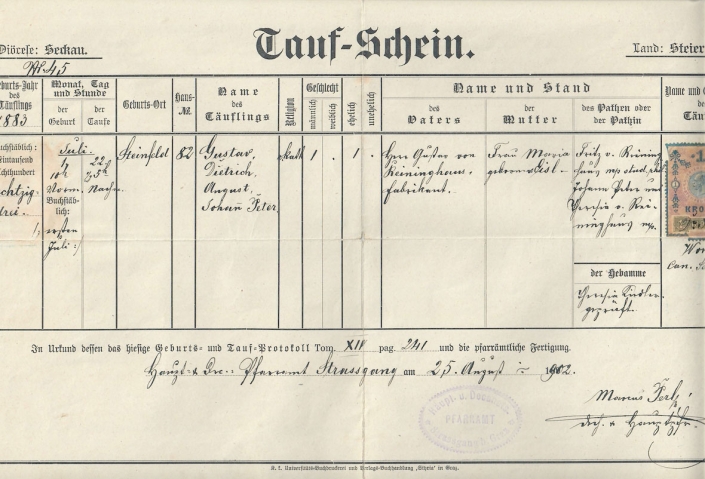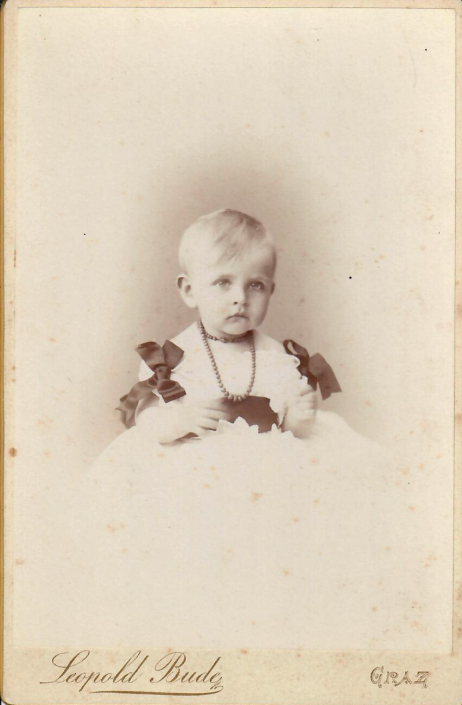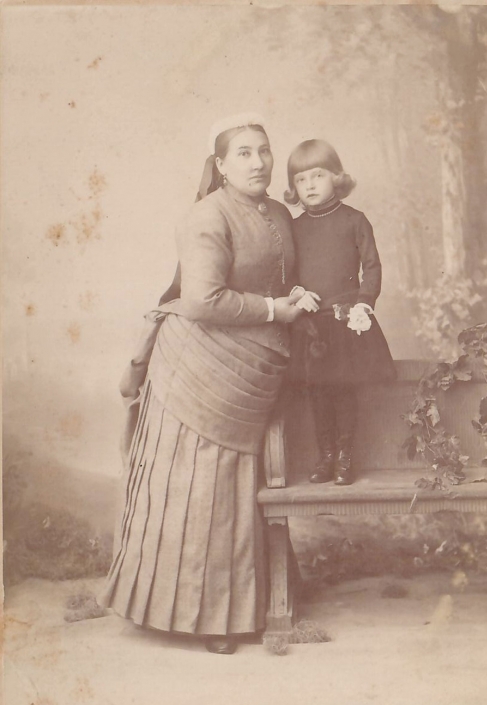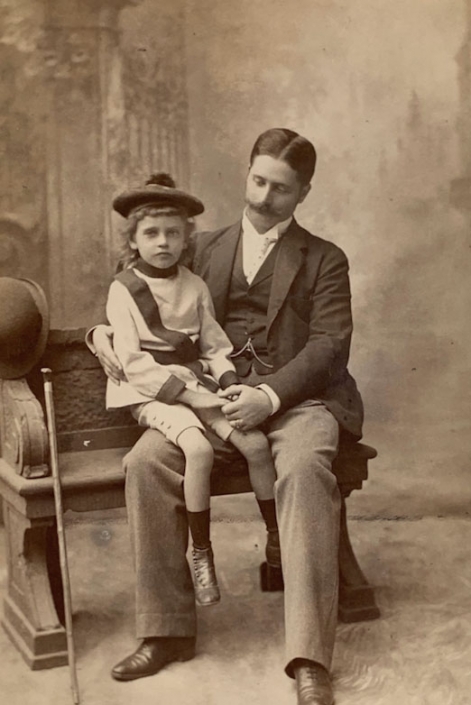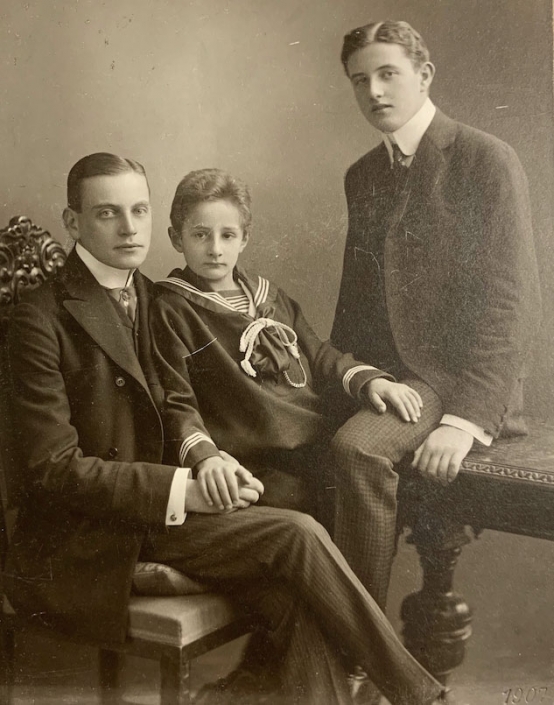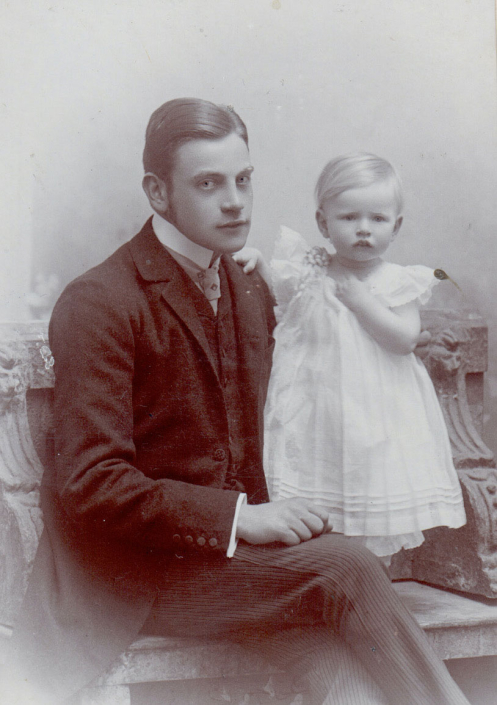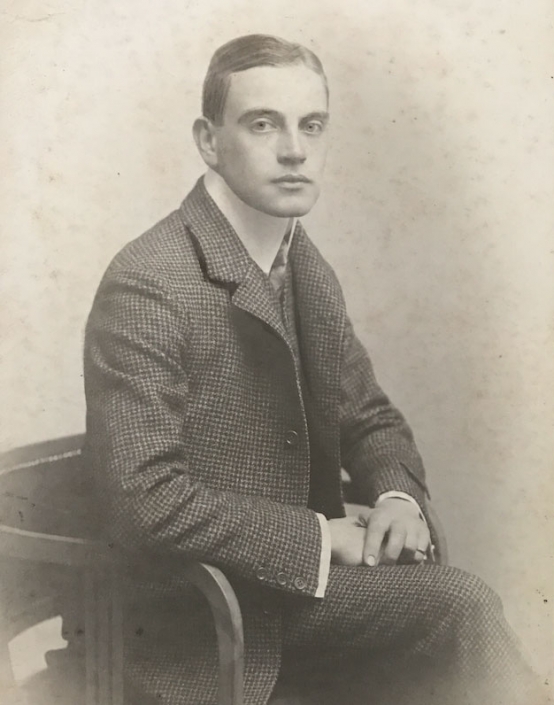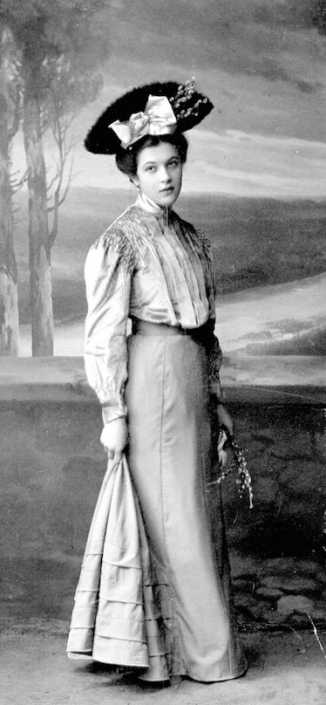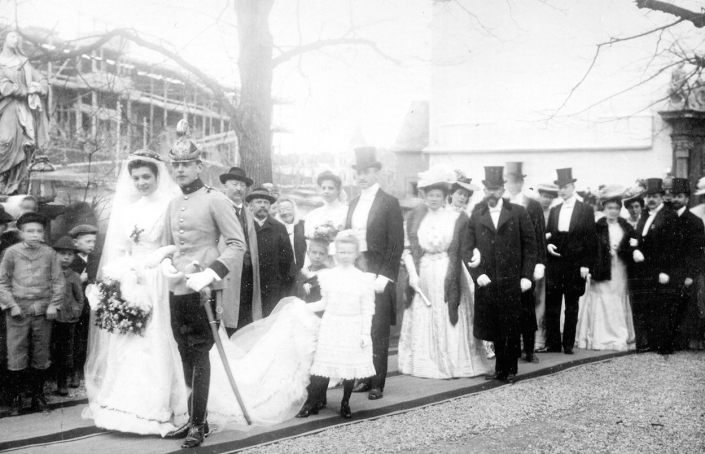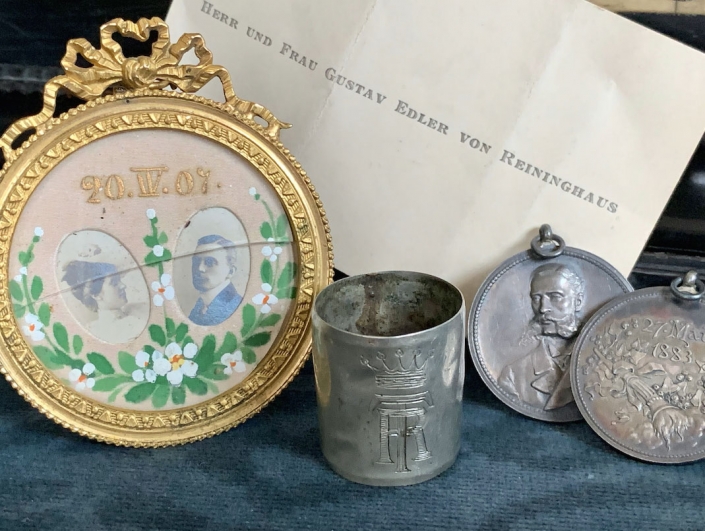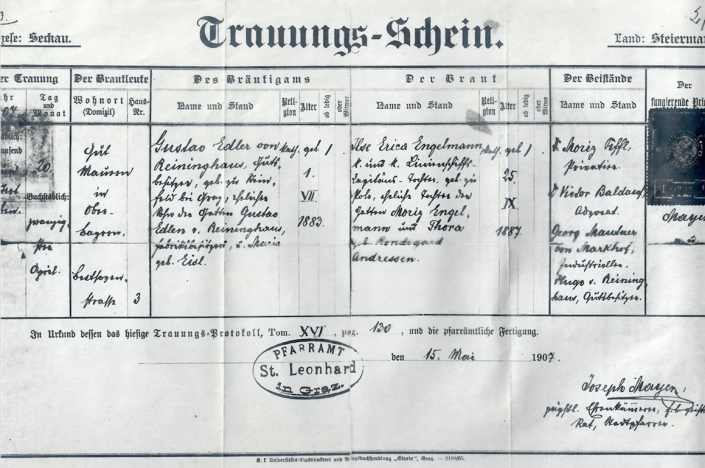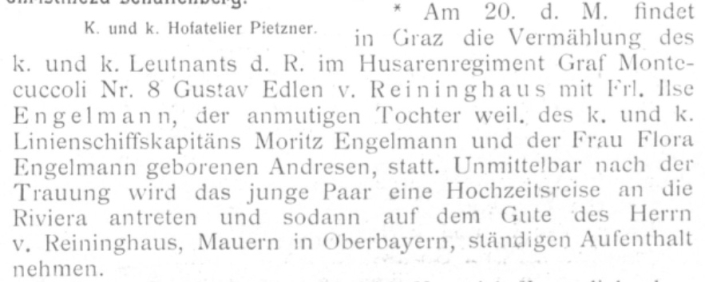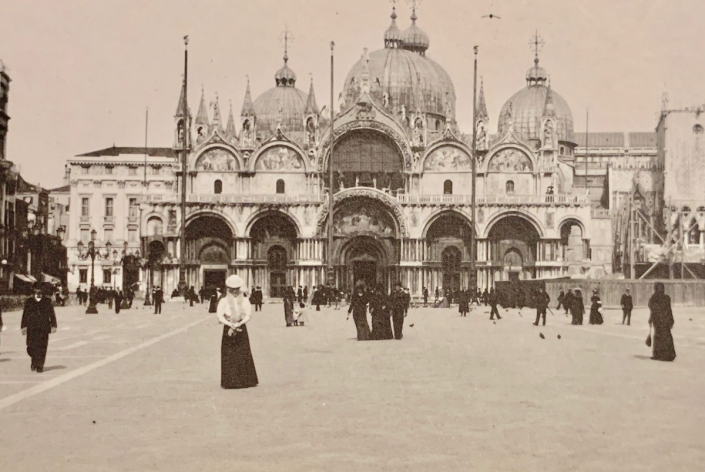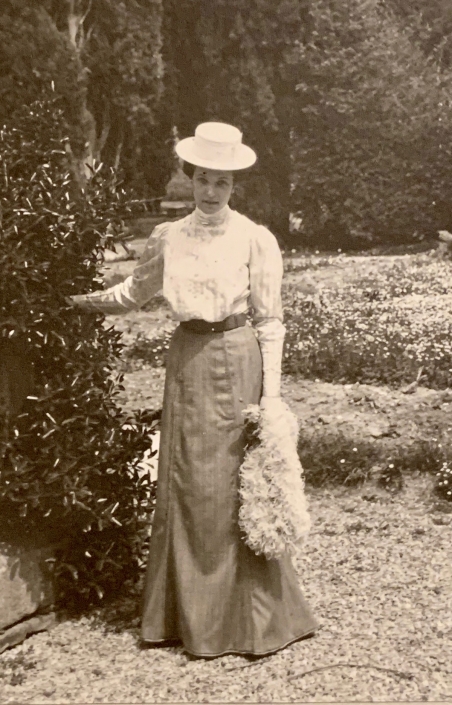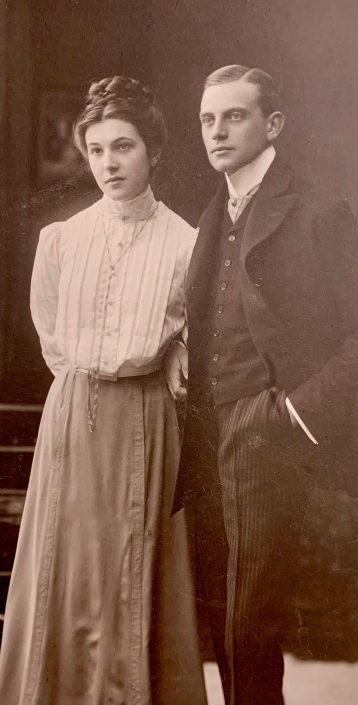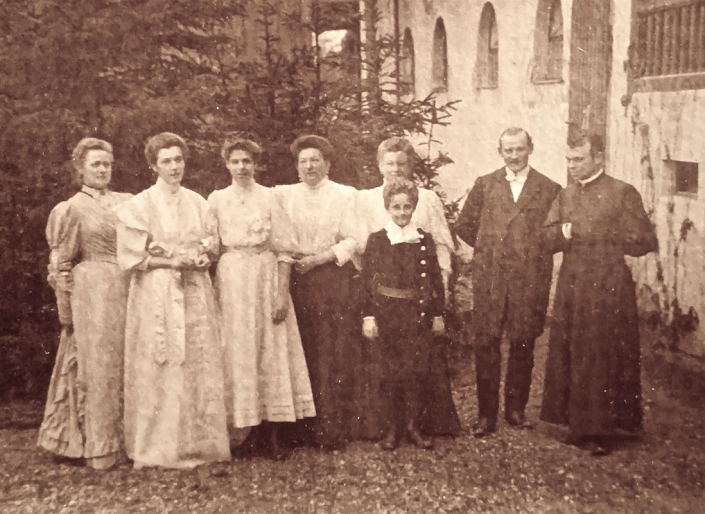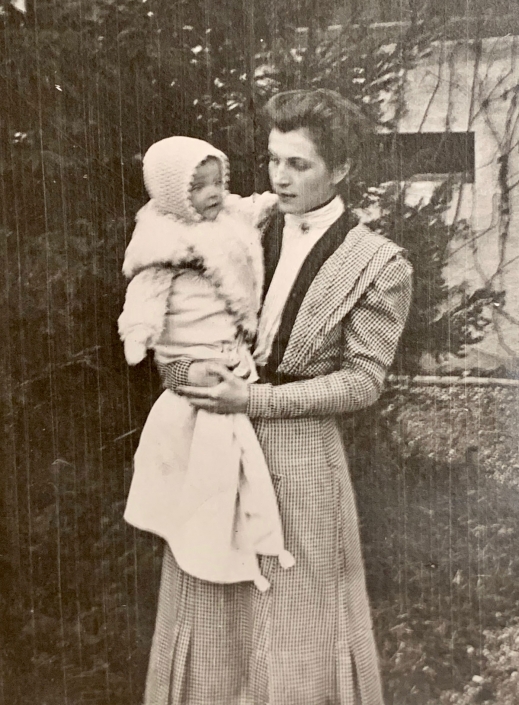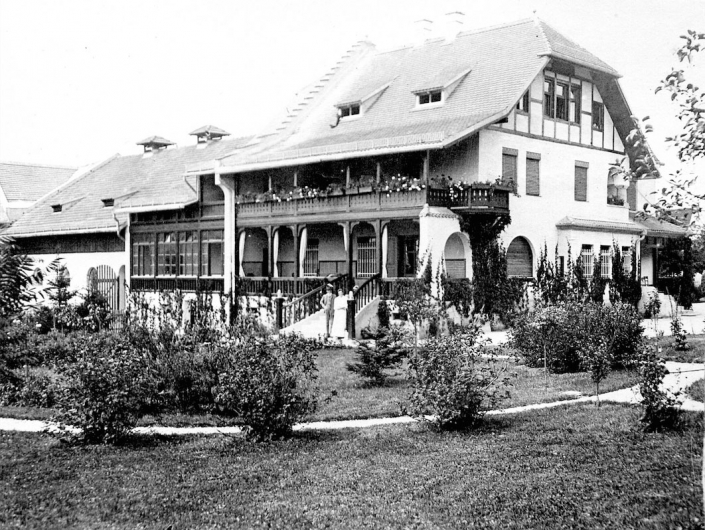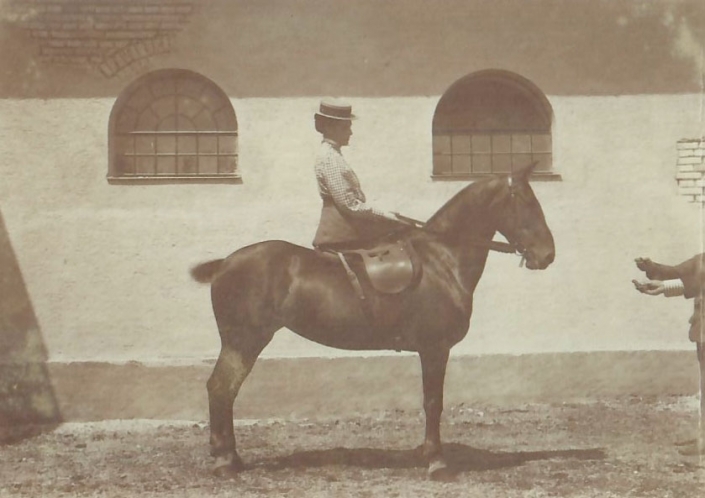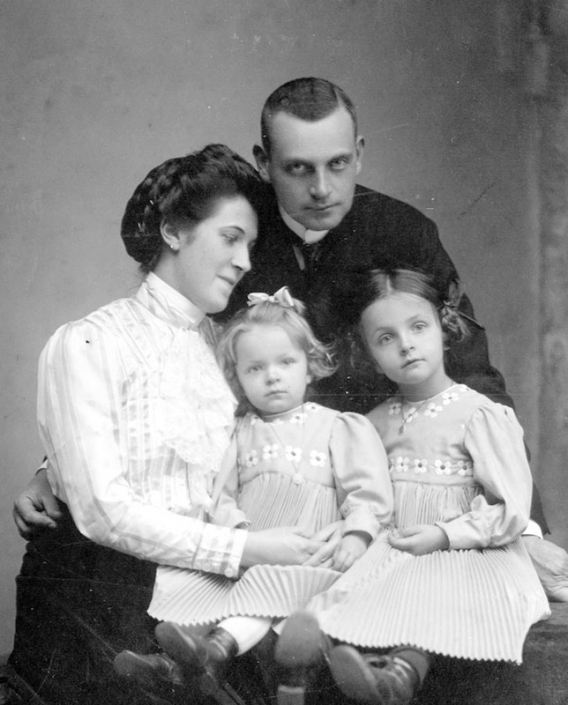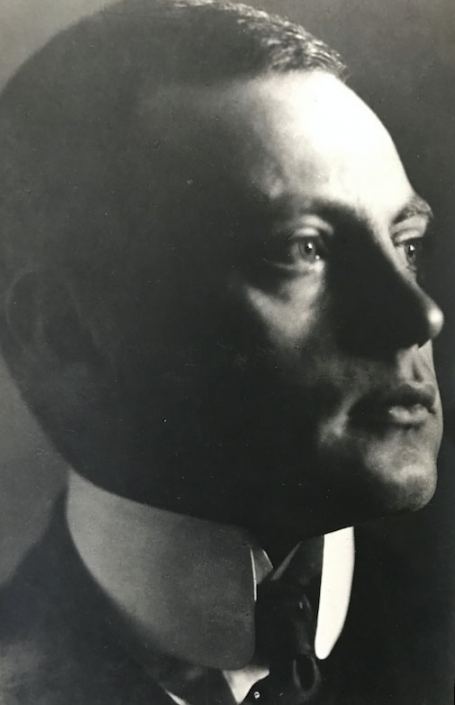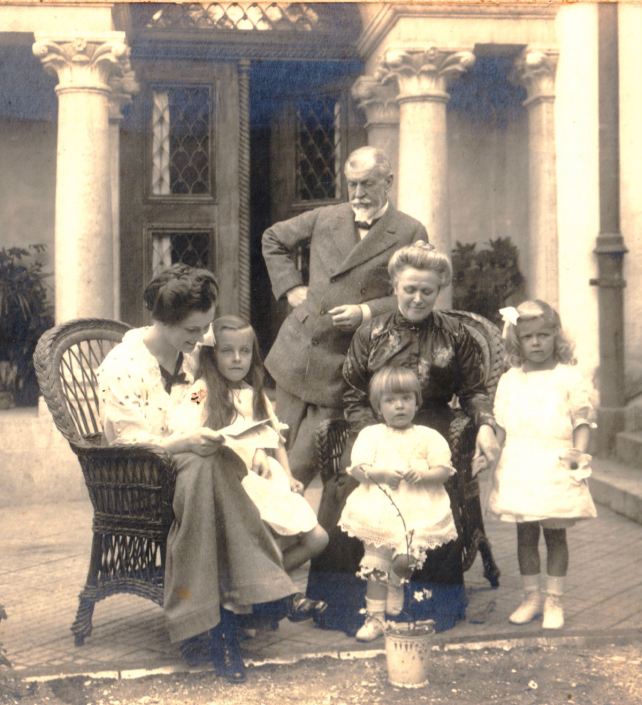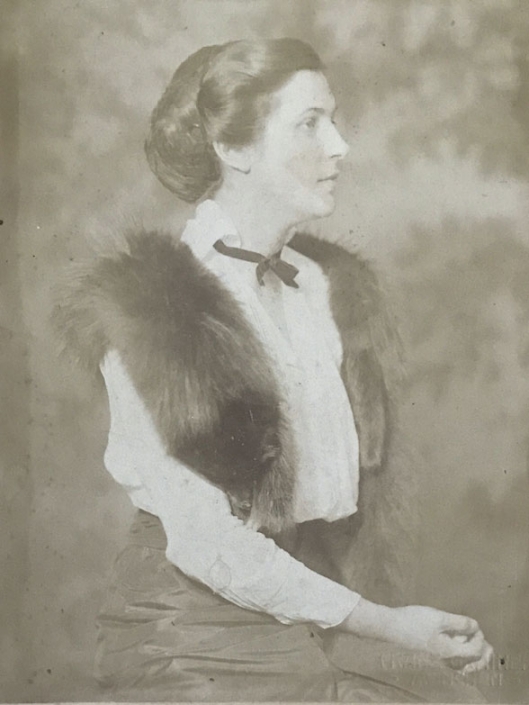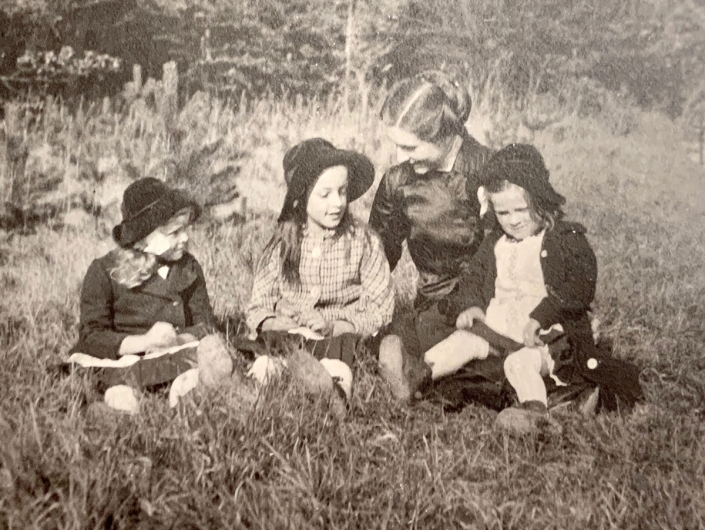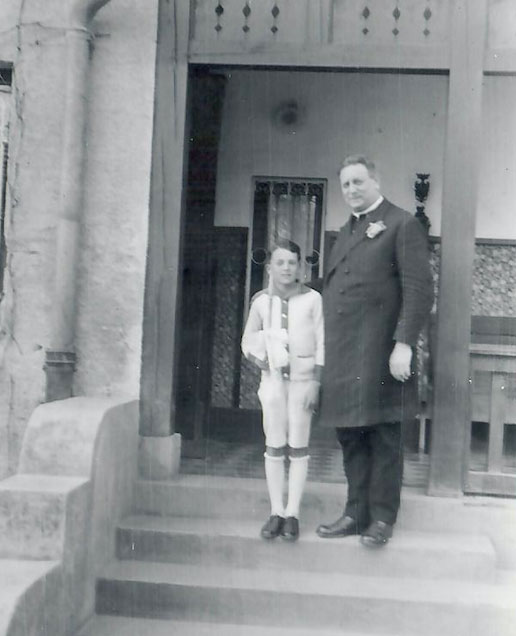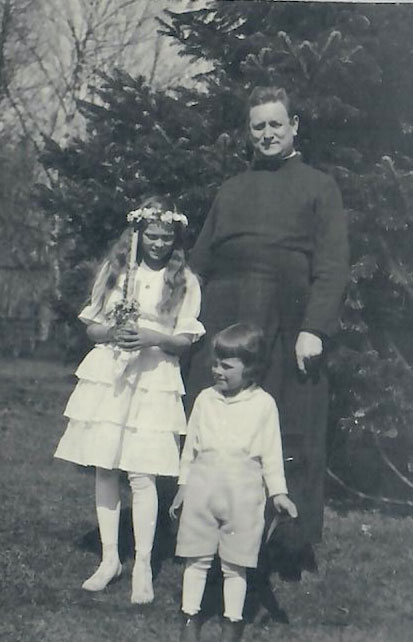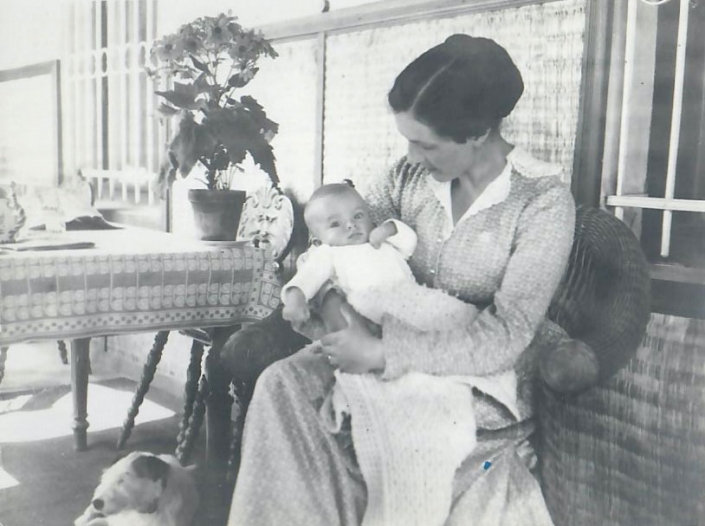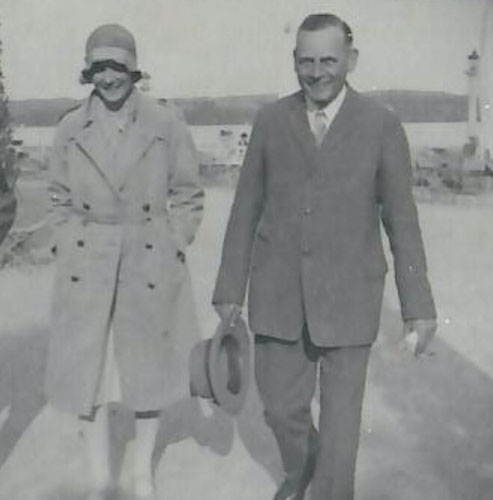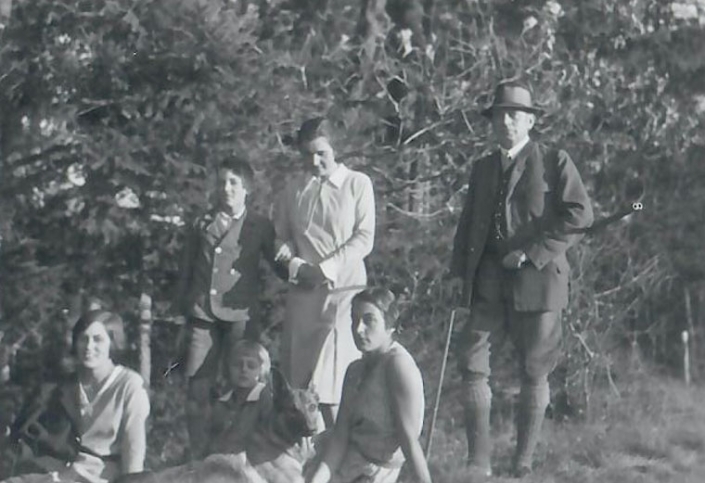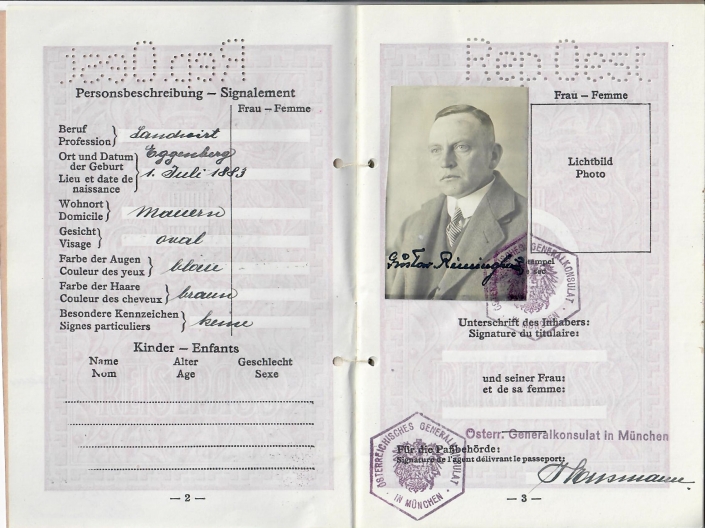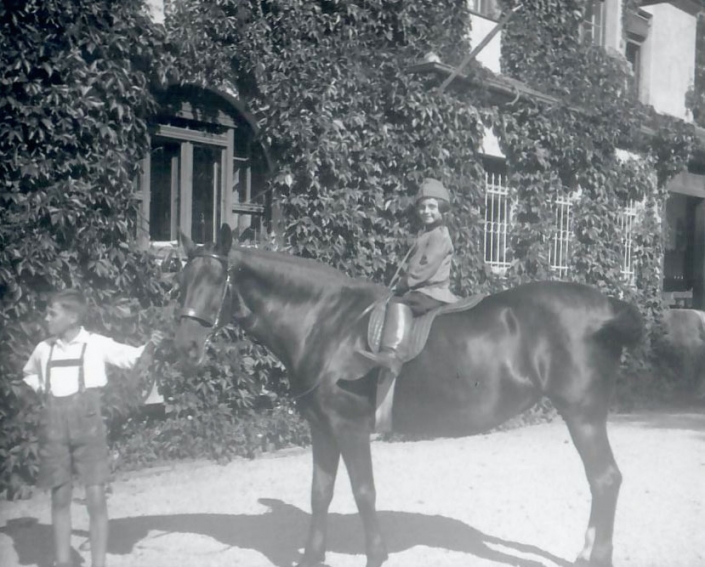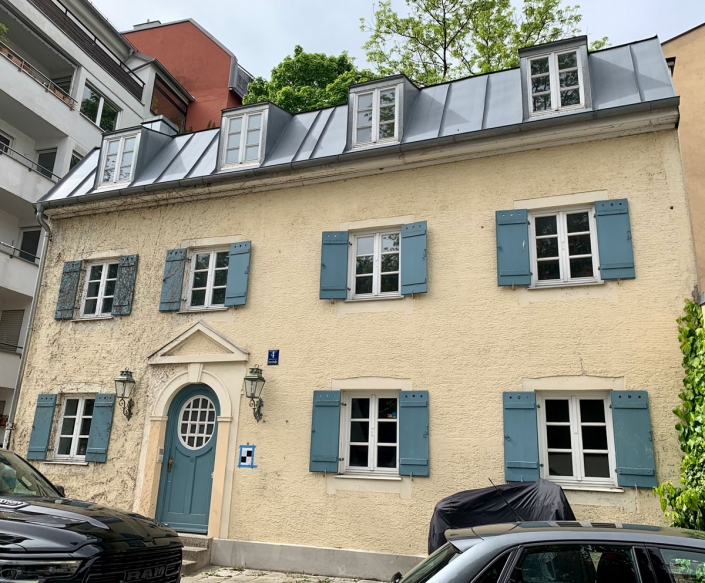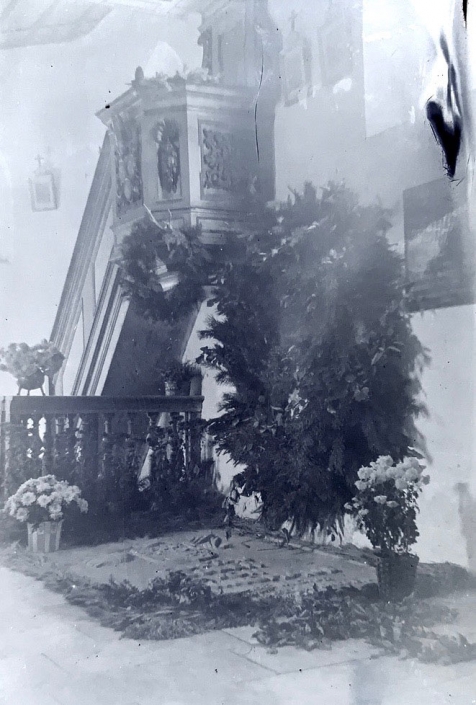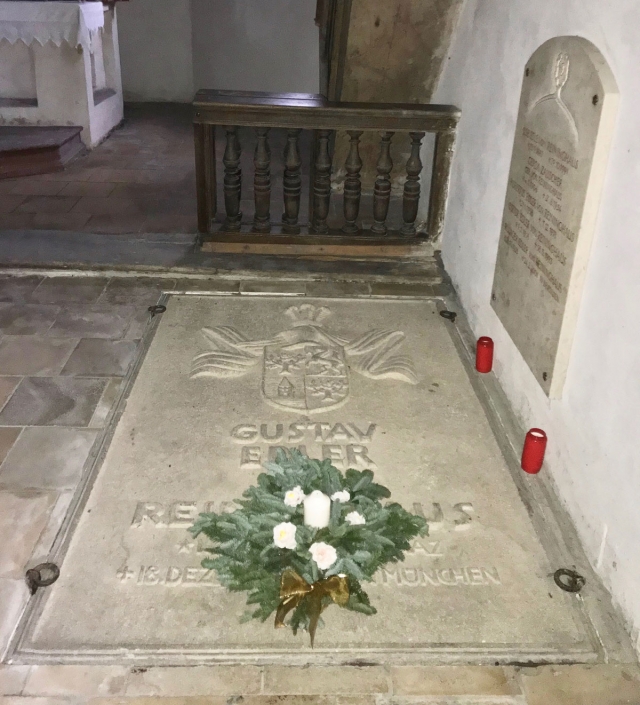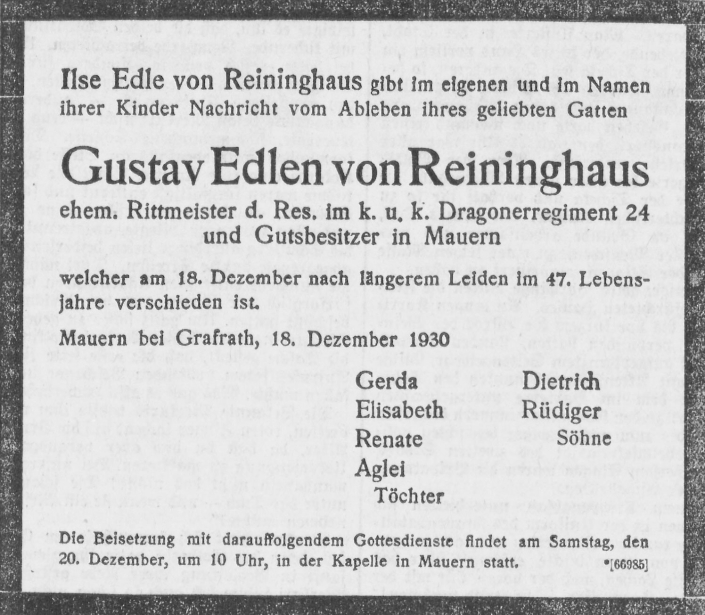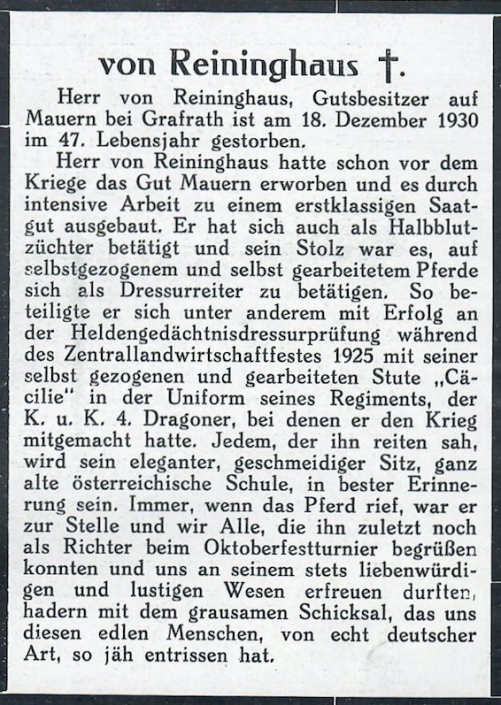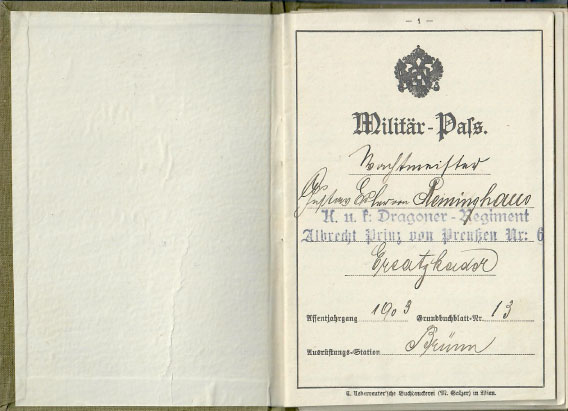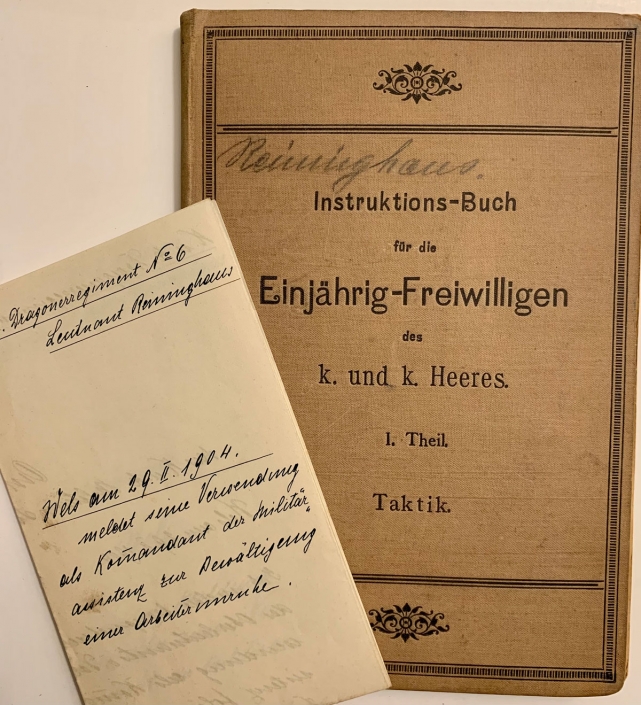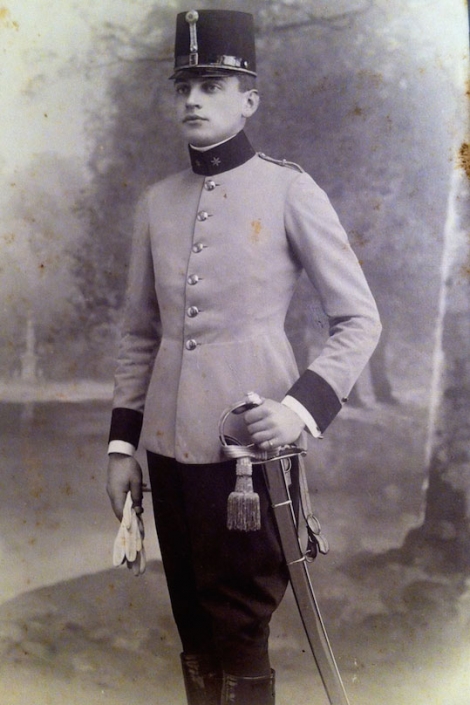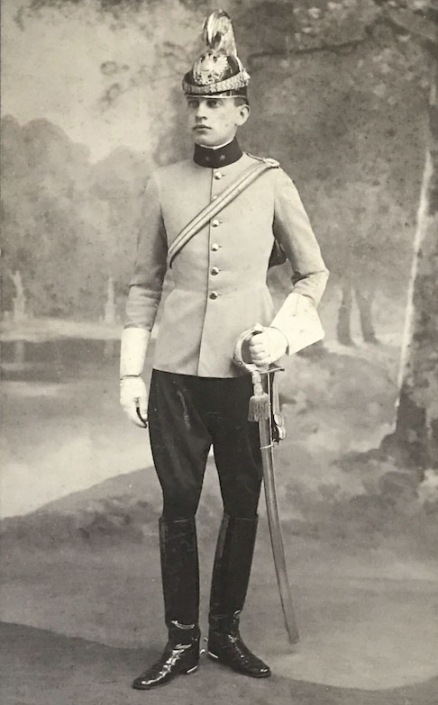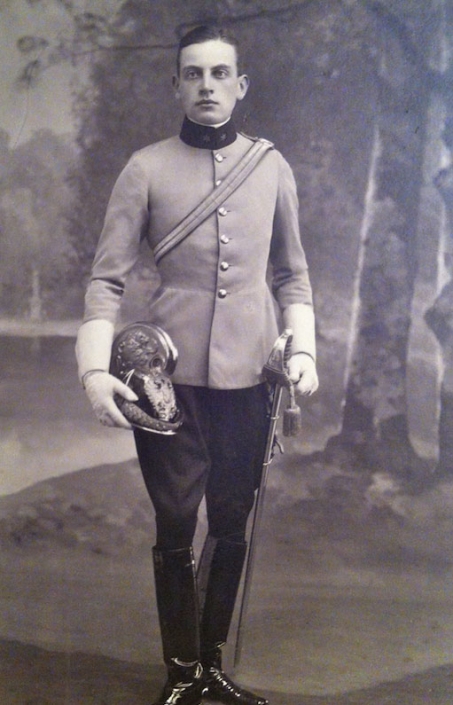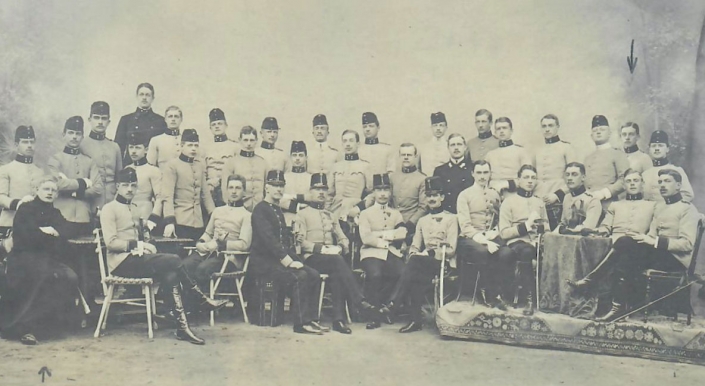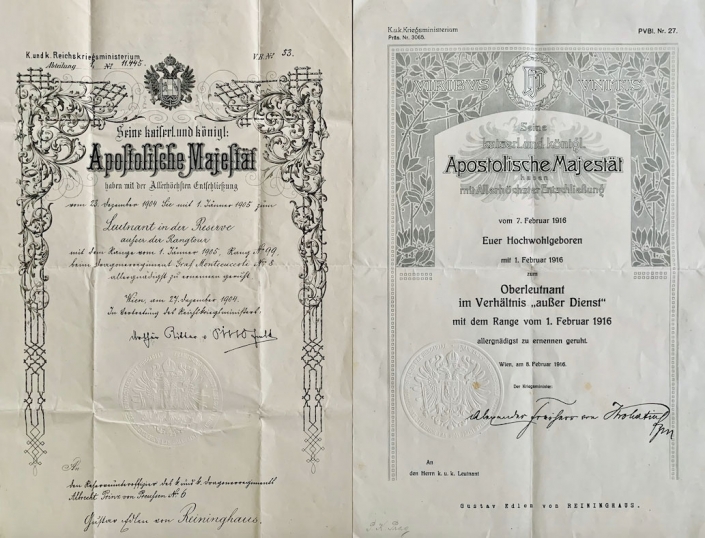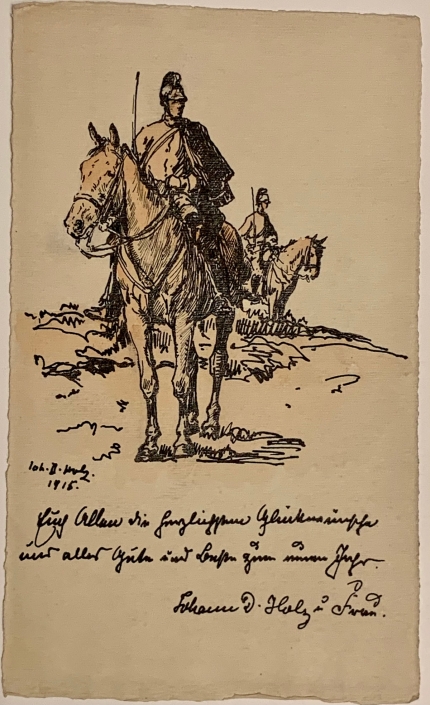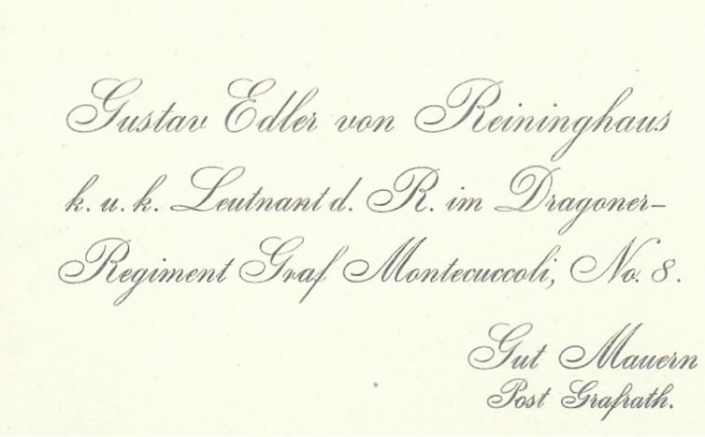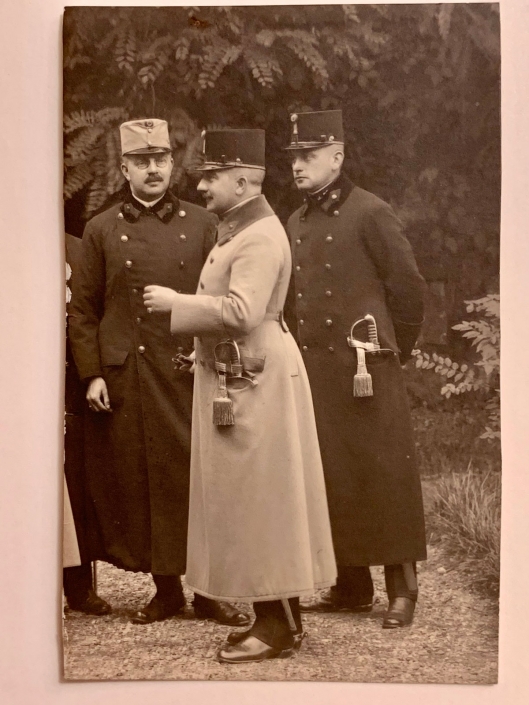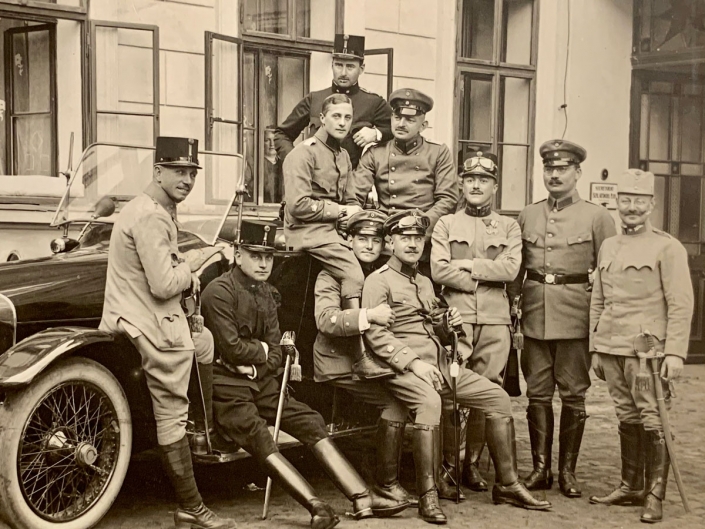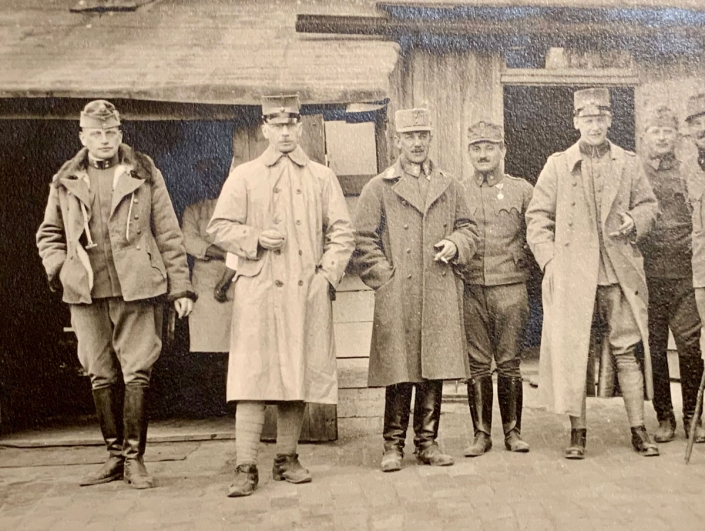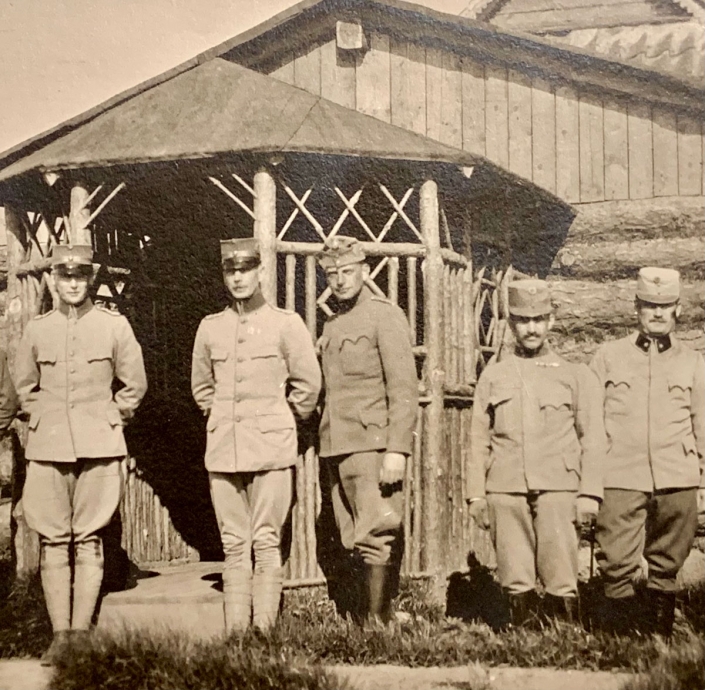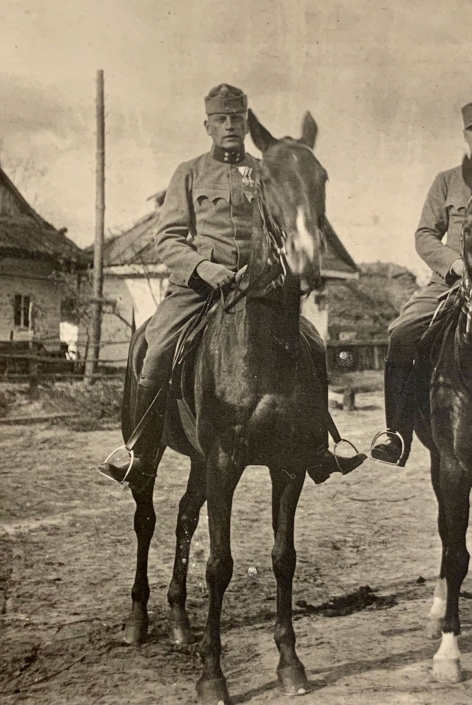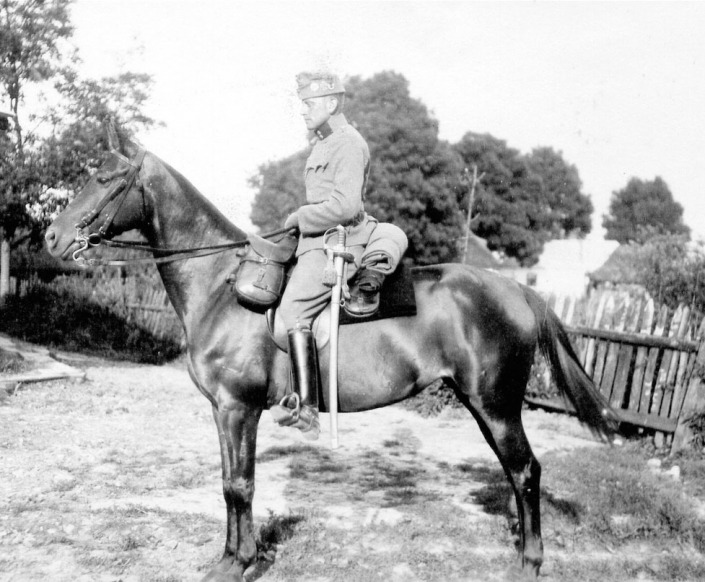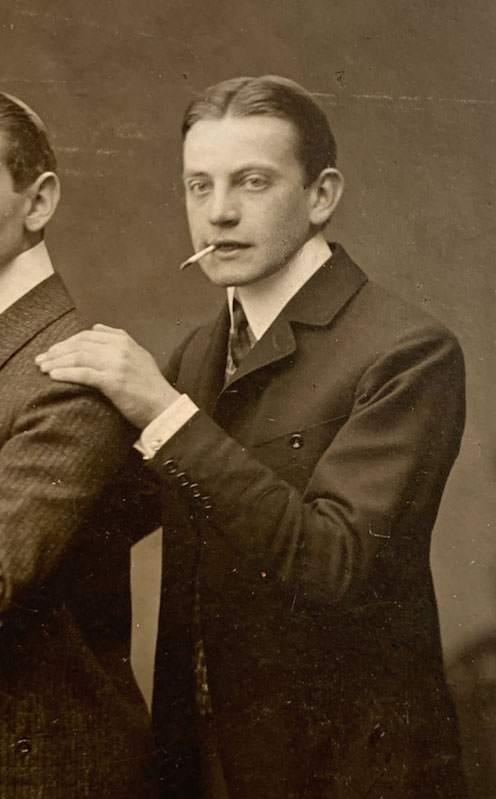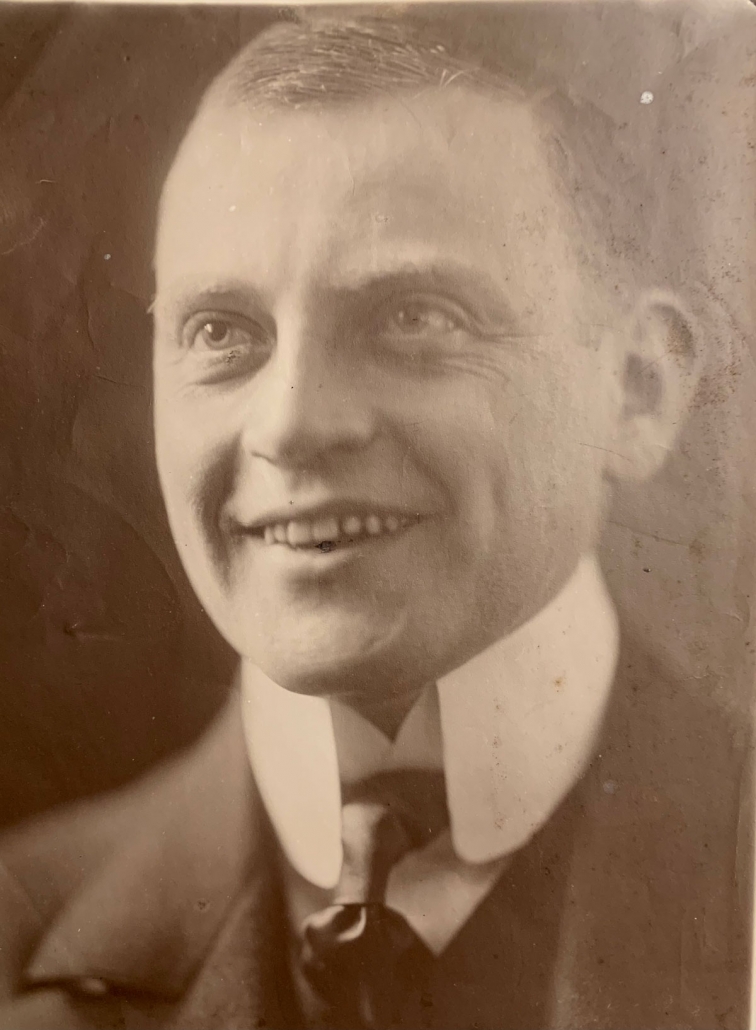Gustav Dietrich August Johann Peter von Reininghaus / 1.7.1883 – 18.12.1930
Gustav II (* Graz / † Munich) was the second child and only son of Maria and Gustav I von Reininghaus and had already lost his father before his birth. Together with his older sister Emilie “Emy”, he grew up with his mother’s second husband, Dr. Paul Reininghaus. Before studying agriculture, the passionate horseman trained with the “one-year volunteers” of the Count Montecuccoli No. 8 Dragoon Regiment and became a lieutenant in the reserve, not to the great delight of his grandmother Therese. He married Ilse Engelmann1 (* Pola, Istria 25.9.1887 / † Fürstenfeldbruck 29.10.1991) in Graz on 20.4.1907 and lived with her on his country estate in Mauern near Munich.
1 Notarial documents and extensive correspondence document that Ilse Engelmann’s biological father was the corvette captain Emerich Ritter von Leitgeb (* Trieste, 1.09.1856 / † Munich 12.05.1915). Daughter Ilse was born during her mother Thora’s first marriage to the ship’s captain Moriz Engelmann, who was 20 years her senior, but came from her relationship with her later husband Emerich von Leitgeb, a brother of the Austrian writer Otto von Leitgeb. Moriz Engelmann, who suffered from tuberculosis for many years and died in 1897, had not previously agreed to the divorce requested by Ilse’s mother. Research by Ulrike Reininghaus
Their six children also grew up in Mauern: Gerda, Elisabeth, Renate, Dietrich, Aglaya and Rüdiger. It is thanks to Gustav II that photographs of them have survived. As one of the few camera owners to be found at the time, he documented his family photographically from an early age – as well as his horses, hunting parties and farmland. In 2004, he was even presented as one of five photographers in the special exhibition “Alles im Kasten – Frühe Amateurfotografen im Brucker Land (1900 – 1950)” at the Jexhof Farm Museum near Mauern. His pride and love for his wife Ilse and their six children, whose well-being was his top priority, can be seen in many of his photos. Tragically, he did not have enough time for them, as Gustav II would only live to be 15 years older than his father.
The “terrible agrarian political situation” (world economic crisis), as he wrote on December 9, 1930 from Mauern in a letter to his long-time hunting friend Julius Hess, Professor of Painting at the Academy of Fine Arts in Munich, must have taken a terrible toll on him, not only financially but also in terms of his health. For months he had “endured wordless pain”, which he “still had to overcome”. However, an examination in Munich had now produced a “very favorable result” and the worst was over. Gustav continued the same letter on December 17, now from a private clinic in Munich-Schwabing, to which “the doctor had taken him after repeated relapses”. There, “gallstones were found, which were apparently the main cause of the cramps at the moment”. He was now being treated very vigorously with all possible means and the doctor hoped “that it might be possible to repair it without an operation”. He optimistically hoped to be able to go home on “Tuesday the 23rd” and asked his friend to visit him, saying that he would be delighted and could also be “reached by telephone”. He concluded the letter with: “Result. A kiss on the hand from your gracious wife. Best regards, your Reininghaus“. These were to be the last lines he wrote. Gustav II v. Reininghaus died one day later, on December 18, 1930, at the age of only 47. For his wife and children, who had been expecting him back in Mauern for Christmas, the news of his unexpected death must have been just as shocking and incomprehensible as it was for his relatives in Austria and all his friends and acquaintances. Everyone had assumed that he had only wanted to cure his gallstones in Munich. Professor Dr. Maximilian Borst, privy councillor and leading pathologist in Munich, gave the cause of death as “acute failure of the heart muscle”, triggered by “atherosclerosis of the aorta and the coronary arteries of the heart” in the autopsy carried out a day later – he found no gallstones. The rumor that occasionally arose due to his unexpected death that Gustav II had possibly taken his own life due to his professional worries was thus clearly refuted. The diagnosis also gave his wife Ilse the sad certainty that the death of her beloved husband could not have been prevented despite the misdiagnosis. His family received permission to have Gustav II v. Reininghaus buried in the crypt of the medieval St. George’s Chapel in Mauern – his tombstone is adorned with the Reininghaus family coat of arms and remains unchanged to this day. Ilse had their wedding rings reworked into a golden cross, which she wore around her neck until her death 61 years later.

